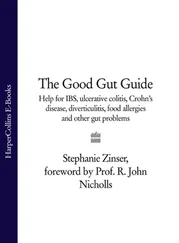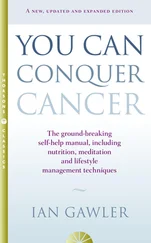Taking regular exercise helps to prevent high blood pressure by:
 burning off stress hormones that trigger arterial spasm in small blood vessels
burning off stress hormones that trigger arterial spasm in small blood vessels
 dilating peripheral veins
dilating peripheral veins
 increasing the efficiency of your cardiovascular system so your pulse rate falls
increasing the efficiency of your cardiovascular system so your pulse rate falls
boosting the muscle pump action of your skeletal muscles
lowering blood fat levels
reducing the risk of atherosclerosis.
For more information, see Chapter 21.
High blood pressure is thought to be linked with excessive levels of stress in some people. Susceptible individuals have an overactive part of the nervous system (sympathetic nervous system) which is unusually responsive to stressful stimuli that would normally be associated with only a mild, temporary rise in blood pressure. This overactivity of sympathetic nerves probably runs in families, with stress acting as the environmental factor that triggers off the process.
In people sensitive to stress, a condition known as Gaisbock’s syndrome can occur. This is a form of labile hypertension in which blood pressure levels can vary considerably. Sometimes they are high; sometimes they are low or normal. This can lead to more permanent hypertension if their lifestyle doesn’t slow down. One of the most common signs of this is so-called White Coat Hypertension – blood pressure that shoots up on being measured in the surgery or hospital (usually by someone wearing a white coat or uniform). This can increase systolic BP by as much as 100 mmHg, although this is extreme. More commonly, white coat hypertension increases systolic BP by 20–30 mmHg. This form of hypertension is confirmed by attaching the sufferer to a 24-hour BP monitoring tape and showing that BP rises in stressful conditions, including having BP measured by a doctor, then falls again in between.
Until recently, white coat hypertension was thought to be relatively harmless. However, latest research suggests that people with this condition have just as many abnormalities of the heart and blood vessels (e.g. poor left ventricular function, decreased elasticity and increased stiffness of artery walls) as those with persistently high blood pressure. They are also likely to develop hypertension in the future.
In most people, however, stress only causes only a transient rise in BP as a result of the hormone adrenaline (epinephrine). This triggers the constriction of arteries and veins which temporarily puts blood pressure up. This is an adaptive response to help you fight or flee in dangerous situations. Blood pressure can still fall when you are at rest or asleep, however, and relaxation training is usually helpful in offsetting the effects of excessive stress.
For more information, see Chapter 21.
Interestingly, people who develop an excessive scar tissue reaction to a skin wound and produce a large, lumpy, keloid scar seem to be twice as likely to develop high blood pressure as people who produce normal amounts of scar tissue. This is thought to be due to a blood protein, angiotensin II, which helps to regulate blood pressure. It is now also known to stimulate production of collagen – a fibrous protein found in scar tissue. A group of drugs that block angiotensin (angiotensin converting enzyme – or ACE-inhibitors) are commonly used to treat high blood pressure. The link is the result of much research in an attempt to unravel some of the mysteries of essential hypertension.
For more information on dietary factors affecting essential hypertension, such as increased salt intake, and low intakes of calcium, magnesium, folic acid and antioxidants, see Chapters 6, 7, and 12.
Causes of Secondary Hypertension
One in ten people with hypertension have a recognizsed, underlying cause and are said to have secondary hypertension. Secondary hypertension should always be ruled out in any hypertensive person, but it is especially important to exclude other conditions in people developing high blood pressure before the age of 35.
The commonest cause of secondary hypertension is kidney disease, which accounts for 8 out of 10 cases. High blood pressure can also be the cause of kidney disease, however, and it can be difficult for doctors to tell which condition developed first. When high blood pressure is the cause of kidney disease, this occurs because essential hypertension leads to hardening and furring up of the large renal arteries and also damages small blood vessels in the kidney. As a result, blood supply to the kidneys is reduced and they may start to shrink. At the same time, poor blood supply to the kidney filtering units (nephrons) means less urine is produced. Kidney function progressively deteriorates and fluid builds up in the circulation, contributing to hypertension. Poor blood supply to the kidneys also stimulates the special pressure receptors (baroreceptors) in the kidneys that are responsible for monitoring blood pressure. If they detect blood pressure has fallen within the kidneys, they trigger increased production of renin hormone, which raises blood pressure in an attempt to increase blood supply to the kidneys. This puts BP up even more, so another vicious cycle develops.
Where kidney disease comes first, and high blood pressure develops as a consequence, the usual kidney diseases involved are:
chronic glomerulonephritis (inflammation of the kidney filtration units)
 chronic atrophic pyelonephritis (shrinking of kidney tissue due to chronic infection or inflammation)
chronic atrophic pyelonephritis (shrinking of kidney tissue due to chronic infection or inflammation)
 congenital polycystic kidneys (abnormal kidney structure due to the formation of multiple cysts during embryonic development).
congenital polycystic kidneys (abnormal kidney structure due to the formation of multiple cysts during embryonic development).
Kidney problems are thought to cause high blood pressure by reducing filtration of excess fluid and salts from the body, which build up in the circulation to raise blood pressure. Increased secretion of renin hormone is also involved.
Other relatively common causes of secondary hypertension include:
pre-eclampsia during the last three months of pregnancy (which affects around one in ten pregnant women)
 the side-effects of some drugs.
the side-effects of some drugs.
Rarer causes of secondary hypertension include:
anatomical abnormalities of the circulatory system such as narrowing of the aorta or renal artery
 polycythaemia, in which blood stickiness is significantly increased due to over-production of red blood cells
polycythaemia, in which blood stickiness is significantly increased due to over-production of red blood cells
Conn’s syndrome, in which there are high levels of aldosterone hormone
phaeochromocytoma, due to a tumour that secretes excessive amounts of adrenaline hormone and noradrenaline
Cushing’s syndrome, due to excessive exposure to corticosteroids – either from overactive adrenal glands or from steroid drug treatment
 acromegaly, due to excessive production of growth hormone by the pituitary gland
acromegaly, due to excessive production of growth hormone by the pituitary gland
Читать дальше

 burning off stress hormones that trigger arterial spasm in small blood vessels
burning off stress hormones that trigger arterial spasm in small blood vessels
![Эдвард Докс - Pravda ['Self Help' in the UK]](/books/33503/edvard-doks-pravda-self-help-in-the-uk-thumb.webp)









